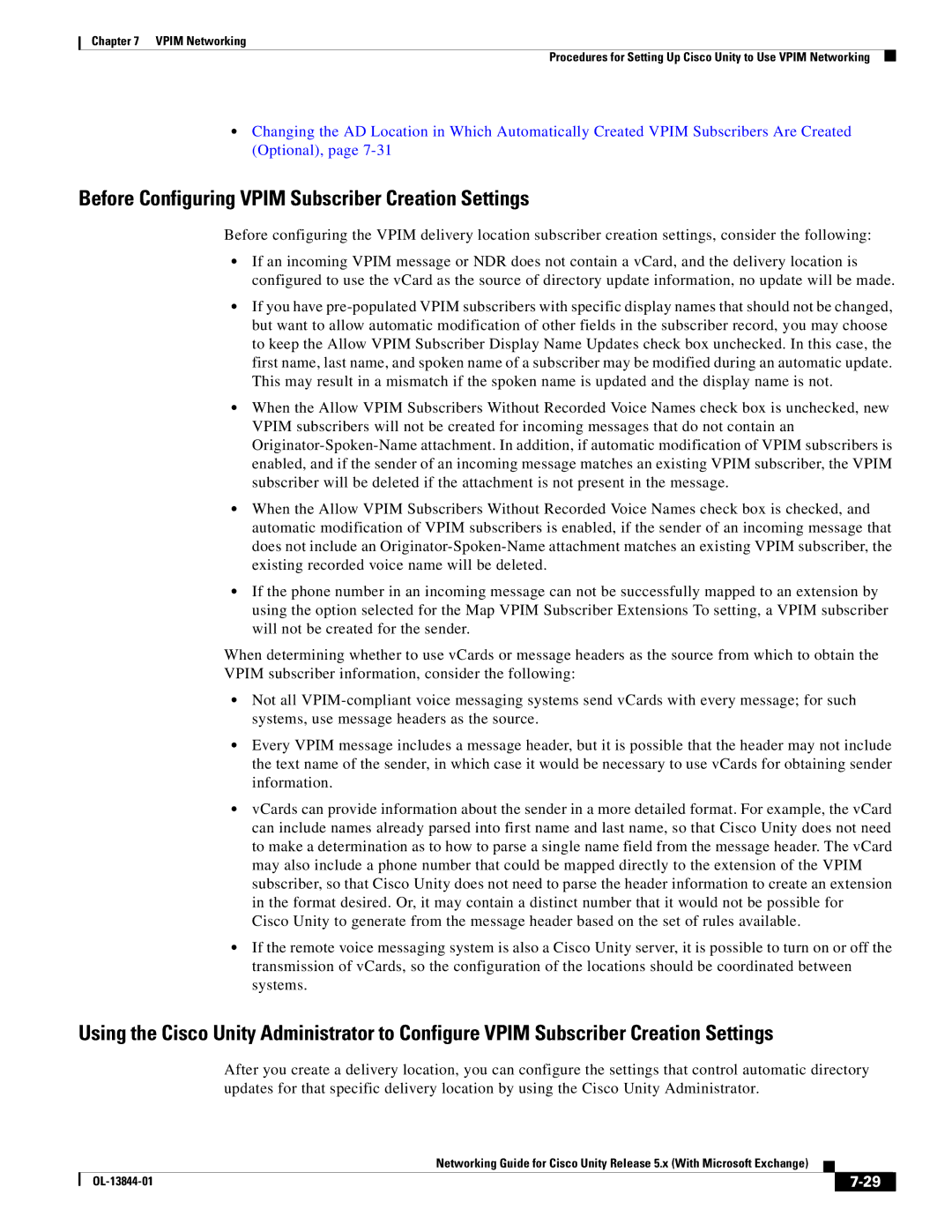Chapter 7 VPIM Networking
Procedures for Setting Up Cisco Unity to Use VPIM Networking
•Changing the AD Location in Which Automatically Created VPIM Subscribers Are Created (Optional), page
Before Configuring VPIM Subscriber Creation Settings
Before configuring the VPIM delivery location subscriber creation settings, consider the following:
•If an incoming VPIM message or NDR does not contain a vCard, and the delivery location is configured to use the vCard as the source of directory update information, no update will be made.
•If you have
•When the Allow VPIM Subscribers Without Recorded Voice Names check box is unchecked, new VPIM subscribers will not be created for incoming messages that do not contain an
•When the Allow VPIM Subscribers Without Recorded Voice Names check box is checked, and automatic modification of VPIM subscribers is enabled, if the sender of an incoming message that does not include an
•If the phone number in an incoming message can not be successfully mapped to an extension by using the option selected for the Map VPIM Subscriber Extensions To setting, a VPIM subscriber will not be created for the sender.
When determining whether to use vCards or message headers as the source from which to obtain the VPIM subscriber information, consider the following:
•Not all
•Every VPIM message includes a message header, but it is possible that the header may not include the text name of the sender, in which case it would be necessary to use vCards for obtaining sender information.
•vCards can provide information about the sender in a more detailed format. For example, the vCard can include names already parsed into first name and last name, so that Cisco Unity does not need to make a determination as to how to parse a single name field from the message header. The vCard may also include a phone number that could be mapped directly to the extension of the VPIM subscriber, so that Cisco Unity does not need to parse the header information to create an extension in the format desired. Or, it may contain a distinct number that it would not be possible for Cisco Unity to generate from the message header based on the set of rules available.
•If the remote voice messaging system is also a Cisco Unity server, it is possible to turn on or off the transmission of vCards, so the configuration of the locations should be coordinated between systems.
Using the Cisco Unity Administrator to Configure VPIM Subscriber Creation Settings
After you create a delivery location, you can configure the settings that control automatic directory updates for that specific delivery location by using the Cisco Unity Administrator.
|
| Networking Guide for Cisco Unity Release 5.x (With Microsoft Exchange) |
|
| |
|
|
| |||
|
|
|
|
| |
|
|
|
| ||
